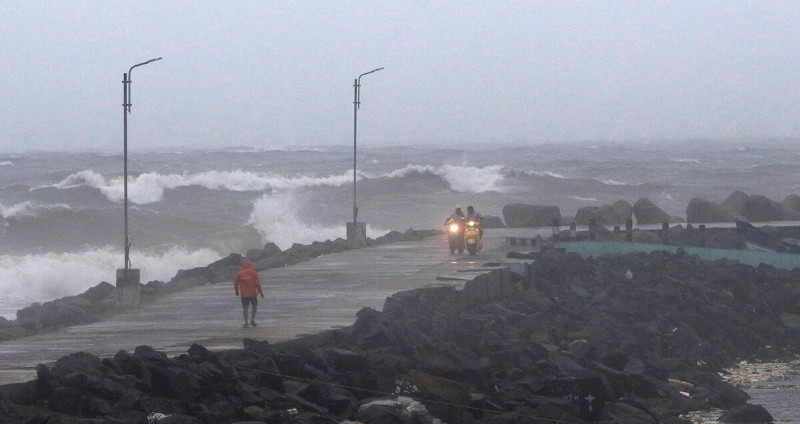
Cyclone season has begun officially with the enhancement of pre-monsoon activity over the Indian sub-continent as also over the season on either side of our coastline. However, the sea surface does not seem to be warm enough to churn disturbances, a prerequisite for the development of storms. ITCZ (Inter Tropical Convergence Zone) as such is still south of the equator and the spring equinox is on date 20th March 2021.
Tropical cyclones are the strangest and strongest natural disasters. Among the natural calamities, the tropical cyclones hold the largest endurance varying from a couple of days to over one week. The storms are notorious for their destructive potential arising out of the deadly combination of high-velocity winds and pouring rains. Storm surge coupled with tides hikes the damaging potential of exponentially inundating large swathe of coastal regions.
In a span of 21 years i.e from 2000 to 2020, there have been only 3 years when there were no storms recorded during the pre-monsoon season in the Indian Seas. These include the year 2005, 2011 and 2012. While 11 years saw 1 storm on each side of the coast, 5 years witnessed 2 cyclones in the Bay of Bengal as well as the Arabian Sea. 2007 and 2010 were the only 2 years to record 3 storms in both seas during the season. During the last 10 years, the pre-monsoon season has hosted a maximum of 3 cyclonic storms and these were equally distributed over the Bay of Bengal and the Arabian Sea.
The year 2019 was a record-breaking year with the Indian Seas churning 9 cyclones, the highest figure in the last 50 years. The storms were named Pabuk, Fani, Vayu, Hikka, Kyarr, Maha, Bulbul, Pawan and TS 07A (JTWC). Last year, 2020 witnessed a total of 5 storms with 2 in pre-monsoon (Amphan and Nisarga) and 3 during post-monsoon.
March: There is the least probability of formation of a cyclone. Only 3 cyclonic storms have formed in the last 100 years over the equatorial Indian Ocean in the proximity of Sri Lanka. These storms have a tendency to form towards the end of the month and also fizzle out over the sea itself. As per records, there is no single storm in March that caused any damage to our coastline.
April: During this month, the probability of forming over the Bay of Bengal is more than the Arabian Sea. These storms invariably head for Myanmar or Bangladesh and very seldom recurve to strike the Indian coast. Extremely Severe Cyclonic Storm Fani was an exception (26th Apr - 05th May) making landfall over the Odisha coast. In fact, it was the strongest ever cyclone to strike Odisha since 1999.
May: This is the peak month of cyclones with equal probability over the Bay of Bengal and the Arabian Sea. In the Bay of Bengal, the majority of cyclones head for Bangladesh and only a few strike West Bengal and Odisha. Arabian Sea cyclones move towards Oman, Yemen and Somalia coast. Very few of these storm head for Gujarat. No storm has hit Gujarat direct since 2000 in the pre-monsoon season.
June: The probability of storm formation is more in the Arabian Sea than in the Bay of Bengal. These storms also head for Oman and Yemen. The Bay of Bengal has hosted only 1 storm since 2000. Cyclone Yemyin in 2007 had landfall near Kakinada. The Arabian Sea has seen 3 storms: Gonu-2007, Vayu-2019 and Nisarga-2020. Cyclones forming during this month are of prime importance since they clash with the arrival and onset of the Southwest Monsoon. Invariably the onset gets delayed and progress becomes sluggish.
The oceanic parameters over the global seas in the Northern Hemisphere do not seem to be heating up sufficiently. A specified threshold of Sea Surface Temperature needs to be crossed for cyclogenesis over the oceans. The possibility of having a cyclone over the Indian Seas in March is ruled out and a long wait till mid-April or even later is quite likely.


